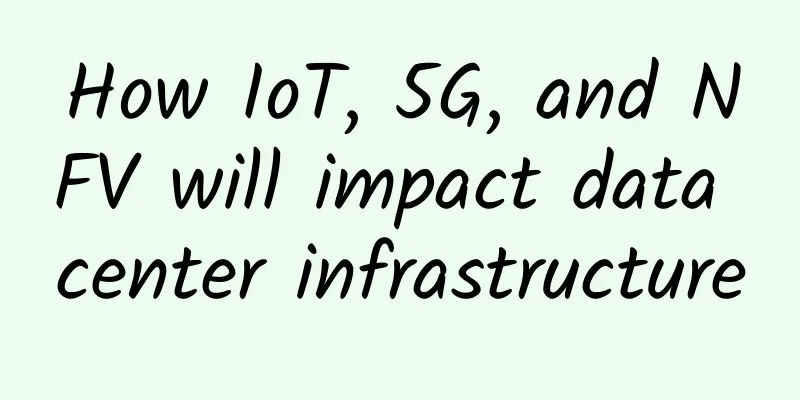How IoT, 5G, and NFV will impact data center infrastructure

|
As we all know, mobile data traffic is growing exponentially. The popularity of smartphones means more and more video services and higher traffic demand. Most telecom operators have chosen 5G. It is expected that the successful implementation of 5G in the next few years will further stimulate consumption by mobile users, which requires telecom operators to carry out more fiber optic deployment. In addition, the Internet of Things will also have an impact on the market. Billions of mobile devices plus sensors, smart grids, smart homes, connected cars and other various data sources will increase the number of IoT connections to tens of billions. The largest Cisco VNI forecast shows that the number of related devices connected to the network will increase from 7.9 billion in 2015 to 11.6 billion in 2020, most of which will come from the Internet of Things.
All of this traffic needs to be handled in the data center. The Cisco Global Cloud Index estimates that global data center traffic was 5 exabytes in 2016 and will grow to 10.4 exabytes in 2019. This will force data center operators to significantly scale their data center network infrastructure and keep it fast and cost-effective, and automation is the only way to make this possible. At the same time, forward-looking data center operators are trying to use leaf-spine architecture to support high levels of east-west traffic in data centers. While more efficient than the three-tier architecture, it also brings more connections that need to be tested and managed. The server is connected to the top-of-rack (ToR) switch via optical fiber, and the ToR and leaf-spine switches are connected via single-mode optical fiber. The backup redundant path is also connected by optical fiber. In the line rate migration from 10G to 100G and the future 200G-400G, these fiber links require more precise loss budgets and reflectivity requirements. Companies applying web-scale have put price pressure on optical transceivers and pluggable devices, forcing suppliers to streamline the functionality of their products, which is likely to reduce product quality. To mitigate this risk, operators need to ensure that they can pass failure tests and the cleanliness of fiber optic connectors. Telecom operators have also begun to adopt NFV, currently running virtualized functions on dedicated hardware on standard IT server platforms and managed using IT automation systems. We have seen the flexibility and agility that web-scale operators have achieved through the cloud and are looking forward to the final realization of virtualized functions. This transformation also puts forward requirements for development - waterfall flow can no longer meet the high speed, and operators are considering adopting the same DevOps solution as web-scale companies. Of course, all changes have the potential to increase complexity and risk. While automation gives operators efficiency, it also requires them to conduct extensive testing to improve the visibility and analysis capabilities of next-generation service assurance and monitoring systems. As physical and virtual resources will be highly distributed, an end-to-end view is critical. To better leverage 5G, IoT and NFV, operators must make steady progress in virtualization, automation and DevOps at every stage of infrastructure, services and processes. |
<<: Currently, CDN security is far from enough
>>: After the video industry cools down rationally, who is the most popular CDN?
Recommend
Sharktech: Los Angeles high-defense server 1Gbps unlimited traffic starting at $129/month, optional 10Gbps unlimited traffic
Sharktech is a long-established foreign hosting c...
Industrial Internet development faces obstacles, 5G may be the key to breakthrough
From the State Council’s release of the "Gui...
How 5G infrastructure can support small data centers at the network edge
[[375109]] 【51CTO.com Quick Translation】5G techno...
Comprehensively promote IPv6 and completely change network life
If you have been following the developments in ne...
The difference between SDN and traditional network operation and maintenance
1. Pain points of traditional network operation a...
HostUS: VPS in 7 data centers in Los Angeles starting at $16 per year, with optional OpenVZ/KVM architecture
HostUS has a low presence now, but it was very po...
[Black Friday] BandwagonHost offers 10% off on all items, starting at $44.9 per year, CN2 GIA line 10Gbps bandwidth optional
Bandwagonhost has released a discount code for th...
Using edge computing to transform networks in a 5G world
As global networks continue to evolve and become ...
iWebFusion: Dedicated servers from $49/month, 10Gbps bandwidth servers from $149/month, Los Angeles/North Carolina data centers
iWebFusion (also known as iWFHosting) is a well-e...
How can IT operation and maintenance service providers keep WannaCry out? Hengyuan Zhicheng said that security needs to be prevented
[51CTO.com original article] It has been a week s...
European and American telecom operators claim: No one needs 6G
"No one needs 6G. The industry should make 6...
An article giving you a first experience with Apache APISIX
Apache APISIX is a dynamic, real-time, high-perfo...
Which cloud SMS service is better? Borui Data released a cloud SMS evaluation report
Introduction Beijing Borui Hongyuan Data Technolo...
The network is too slow to get a subscription?! A hardcore comparison tells you which is faster, 5G or Wi-Fi 6!
My wife, who has always been worried about her ch...
Kingsoft Cloud wins "IPv6 Support Excellence Award"; all cloud products have IPv4/IPv6 access capabilities
Recently, the "GNTC 2020 Global Network Tech...









